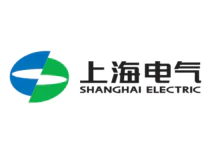Good Morning,
SEC and CFTC’s New Joint Guidance Opens the Door to Mainstream Crypto Adoption
For the first time, U.S. regulators have confirmed that major registered exchanges can list spot crypto products, signaling a breakthrough for digital asset markets.
Historic Joint Statement
In a landmark move, the Securities and Exchange Commission (SEC) and Commodity Futures Trading Commission (CFTC) issued a joint statement clarifying that registered U.S. exchanges are not prohibited from facilitating the trading of certain spot crypto asset products.
The guidance applies to:
- CFTC-registered Designated Contract Markets (DCMs)
- Foreign Boards of Trade (FBOTs)
- SEC-registered National Securities Exchanges (NSEs)
This development represents the strongest signal yet that U.S. regulators are aligned in supporting digital asset innovation under federal market structures.
Project Crypto and Crypto Sprint
The announcement builds on two key regulatory initiatives:
- SEC’s Project Crypto – advancing frameworks for digital asset markets.
- CFTC’s Crypto Sprint – launched last month to solicit public input on listing spot crypto contracts on DCMs.
“Today’s joint staff statement represents a significant step forward in bringing innovation in the crypto asset markets back to America,” said SEC Chairman Paul Atkins.
Industry Reactions
Market leaders quickly welcomed the development.
- “The joint statement gives major U.S. exchanges the green light to offer spot trading on leading digital assets,” said Alexander Blume, CEO of Two Prime Digital Assets. “This opens the door for even more mainstream adoption.”
- Matthew Sigel, VanEck’s head of digital asset research, added: “The NYSE, Nasdaq, CBOE, CME, etc., will soon have spot trading for BTC, ETH, and more.”
- Gerald Gallagher, general counsel for the Sei protocol, wrote: “The turf wars are ending. The SEC and CFTC are rowing in the same direction.”
Why This Matters
Until now, spot crypto trading in the U.S. was largely confined to platforms like Coinbase, Kraken, and Gemini — none of which are national securities exchanges or designated contract markets. With this joint statement, the biggest U.S. exchanges — Nasdaq, NYSE, CME — are now positioned to list crypto spot products.
This comes as the Trump administration pushes to make the U.S. the “crypto capital of the world,” having already signed the first federal stablecoin law earlier this summer. A broader crypto market structure bill is still under development in Congress.
Key Takeaway
The SEC and CFTC’s joint stance marks a turning point: U.S. regulators are aligned on crypto spot trading, opening the door to mainstream adoption through traditional exchanges. This move validates digital assets as a core part of America’s financial infrastructure going forward.
@ Newshounds News™
Source: The Block
~~~~~~~~~
Ripple Custody Targets $16T Tokenization Market With Institutional-Grade Security
Ripple is positioning its custody platform as the backbone of institutional digital finance, aiming to capture a share of the $16 trillion tokenization wave expected by 2030.
Custody Takes Center Stage
Ripple is doubling down on custody as the core of its digital asset strategy. With projections that 10% of global assets will be tokenized and traded on-chain within five years, the company says institutions need bank-grade solutions to secure their digital holdings.
In a blog post amplified by SBI CEO Yoshitaka Kitao, Ripple argued that custody is no longer optional: it’s the foundation of trust that enables banks and enterprises to scale into the tokenized economy.
Safekeeping as the Foundation of Trust
Ripple Custody’s first mission is clear: protect private keys with impenetrable security. The platform delivers:
- Bank-grade private key storage
- Flexible deployment options (SaaS or on-premise)
- Compliance-ready frameworks to meet global regulatory standards
Ripple notes that one breach can wipe out institutional trust, while strong custody infrastructure sets the stage for long-term growth in tokenized assets like real estate, treasuries, and cryptocurrencies.
Stablecoins at Scale
Ripple Custody isn’t just about safekeeping — it’s also about enabling the full stablecoin lifecycle. Institutions can mint, burn, and manage stablecoins across both the XRP Ledger and EVM-compatible blockchains.
- Société Générale FORGE recently launched its euro-backed stablecoin (EURCV) on the XRP Ledger.
- In South Korea, BDACS is leveraging Ripple’s own institutional stablecoin, RLUSD, for payment solutions.
These cases highlight Ripple’s push to become the infrastructure layer for stablecoin settlement worldwide.
Governance Made Simple
To reduce friction in banking operations, Ripple Custody automates back-end processes that traditionally slow institutions down. Features include:
- Automated settlements and reconciliations
- Integrated reporting and compliance
- Support for both public and private blockchains
The goal is to help banks cut costs, reduce operational risk, and align institutional processes with a market moving at digital speed.
Why This Matters
Ripple Custody is already trusted by banks in more than 15 countries, and its reach is growing. With $16 trillion in tokenized assets projected by 2030, the institutions that lead on custody will also lead in global finance’s next chapter.
By combining security, stablecoin infrastructure, and automation, Ripple is positioning itself as the go-to custodian for the tokenized future.
Key Takeaway
Custody is no longer just a support service — it is the foundation of the tokenized economy. Ripple Custody’s secure, scalable infrastructure makes it a frontrunner to capture the institutional market as trillions in assets move on-chain.
@ Newshounds News™
Source: Coinpedia
~~~~~~~~~
Milei Introduces Bill to Halt Money Issuance in Argentina’s Congress
Argentina’s president seeks to enshrine a zero-issuance monetary framework into law, banning deficit financing through money printing and imposing penalties on violators.
A New Fiscal and Monetary Framework
President Javier Milei has introduced the “Draft Law on National Commitment to Fiscal and Monetary Stability” to Argentina’s Congress. The proposal aims to permanently ban governments from using central bank money issuance to finance state expenditures, embedding Milei’s strict fiscal discipline into the country’s legal framework.
According to presidential spokesperson Manuel Adorni, the bill’s central objective is ensuring that all state budgets must balance without relying on printing unbacked cash. Any spending outside of approved budget laws will be prohibited, and officials attempting to execute unauthorized expenses will face penalties.
Nullifying Fiscal Loopholes
Adorni stressed that any regulation that undermines fiscal balance will be considered null and void. The legislation specifies that new crimes will be codified to punish officials who breach its statutes, strengthening accountability within Argentina’s fiscal system.
“All regulations that violate these provisions will be null and void, meaning there will be no laws that undermine fiscal balance and do not establish how planned expenditures will be financed,” Adorni stated.
Context: Austerity and the Chainsaw Model
Since taking office, Milei has pursued what he calls the “chainsaw” model — slashing thousands of public sector jobs, shrinking state institutions, and vetoing spending bills that relied on deficit financing.
His administration recently vetoed Congressional proposals to expand pensions and emergency disability spending, citing that such measures could only be funded by new money issuance — exactly what Milei’s policy seeks to outlaw.
These austerity measures have delivered tangible results:
- Inflation slowed significantly after years of hyperinflationary pressure.
- The Argentine peso stabilized against the U.S. dollar.
- Poverty levels declined modestly, according to government reports.
Criticism and Concerns
Despite early signs of stabilization, critics warn Milei’s approach could create new risks. Saifedean Ammous, economist and author of The Bitcoin Standard, argued that Argentina is trading one crisis for another, warning the country may face a debt default scenario if austerity measures are pushed too far.
Milei’s political opponents also argue that his cuts have disproportionately hurt vulnerable populations, creating social strain even as macroeconomic indicators improve.
Why This Matters
If passed, Milei’s bill would lock Argentina into a new monetary orthodoxy where governments can no longer resort to money printing to finance deficits. Supporters say this could restore credibility to Argentina’s fiscal system and prevent a return to hyperinflation. Critics counter that it risks reducing the state’s flexibility during times of crisis.
Either way, the proposal marks a defining moment in Argentina’s economic experiment — a test of whether extreme monetary restraint can finally bring lasting stability to one of the world’s most inflation-prone economies.
Key Takeaway
Milei’s draft law represents more than just policy — it’s a structural shift in Argentina’s monetary rules. By outlawing deficit financing through money issuance, Milei is betting that hard limits on government spending will anchor stability, even at the cost of austerity.
@ Newshounds News™
Source: Bitcoin.com
~~~~~~~~~
Seeds of Wisdom Team RV Currency Facts Youtube and Rumble
Newshound’s News Telegram Room Link
Follow the Roadmap
Follow the Timeline
Seeds of Wisdom Team™ Website





